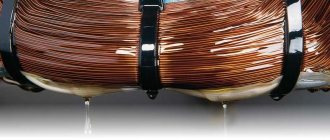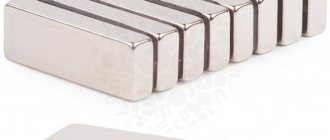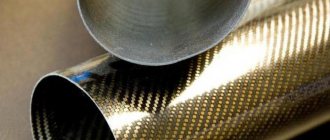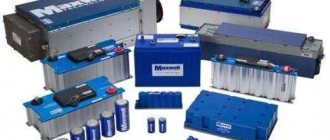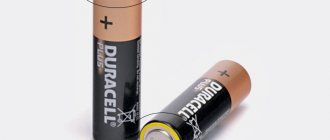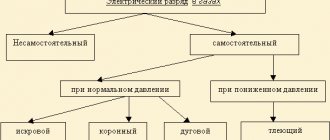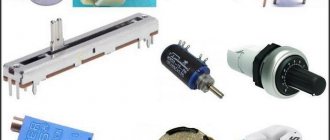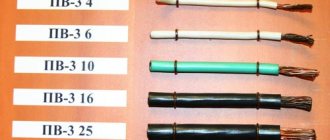Any electrical equipment, including generators, power plants and switchgear, consists of live parts. For reliable and safe operation, the latter must be protected from each other and from the influence of surrounding components. Electrical insulating materials are used for these purposes.
It is important that the winding on the armature is separated from its core, the excitation coil from a similar part, poles and frame of the unit. Materials that are used to insulate something from electrical current are called dielectrics. It is worth noting that such products come in two types - some do not pass current at all, others - although they do this, but in tiny quantities.
When creating such materials, organic and inorganic elements are used, along with various additives necessary for impregnation and gluing. Recently, liquid insulation for wires, often used in switches and transformers (for example, transformer oil), has been gaining widespread popularity. No less often, gaseous dielectrics, including ordinary air, are used in electrical equipment.
Electrical insulating materials and areas of their application
The main areas of application of electrical insulating materials include various industrial branches, radio engineering, instrument making and installation of electrical networks. Dielectrics are the main elements on which the safety and stability of any electrical appliance depends. The quality and functionality of insulation is influenced by various parameters.
Thus, the main reason for using electrical insulation is to comply with safety regulations. In accordance with them, it is strictly prohibited to operate equipment with partially or completely missing insulation or damaged shell, since even small currents can harm the human body.
Properties of dielectrics
In order to guarantee the performance of important functions, electrical insulating products must have the necessary properties. The main difference between a dielectric and a conductor is a much higher resistivity (100-1100 Ohm*cm). On the other hand, their electrical conductivity is 14-15 times lower than the current-carrying conductors. This is due to the natural origin of insulating materials, which contain much less free negative electrons and positively charged ions that affect current conductivity.
Important! Despite the last statement, when any dielectric is heated, the number of ions and electrons increases significantly, which increases electrical conductivity and creates a risk of electric shock.
All properties of dielectrics can be divided into two main groups - active and passive, with the second being the most important. Passive is the dielectric constant: the lower its value, the more reliable and high-quality the insulator is, since it does not have a negative effect on the electrical circuit and does not add parasitic capacitances. On the other hand, if the product is used as a dielectric capacitor, then the permeability should be as high as possible (stray capacitances are important in this case).
Water
This is completely counterintuitive, but this point is included here to blow your mind. Water practically does not conduct current! (UPD: while the publication was being prepared, an article about this appeared.) Everywhere they teach that water is a good conductor of electricity, and this is usually true. But very pure deionized water, which contains nothing but H2O, does not conduct current - its resistivity is 18 MΩ⋅cm. The water that conducts current is not pure enough. Measuring electrical conductivity is a fairly simple way to assess the quality and purity of water.
A bottle of deionized water from a radio store. Printed circuit boards of electronic devices should only be washed with distilled or deionized water, otherwise the salts contained in the water can cause trouble.
Having highly polar and mobile molecules, water is not only an insulator, but also has a very high dielectric constant - about 81 at room temperature (for most conventional dielectrics it does not exceed 20-30). Capacitive humidity meters are based on this: a small amount of water between the plates of the capacitor dramatically increases its capacity.
Unfortunately, water is an excellent solvent, and substances dissolved in it usually form electrolytes. Once distilled water is left in the air, it dissolves carbon dioxide, forming an electrolyte - a weak solution of carbonic acid. Water can also dissolve the walls of the vessel in which it is located. The slightest admixture of salts, especially chlorides and sulfides of sodium, potassium, and calcium, sharply increases the conductivity of water. Therefore, in practice, water is no good as a dielectric.
Isolation Options
The main ones include:
- electrical strength;
- electrical resistivity;
- relative permeability;
- dielectric loss angle.
When assessing the quality and efficiency of dielectrics, and comparing their properties, it is necessary to identify the dependence of the listed parameters on the values of current and voltage. Compared to conductors, electrical insulating components have increased electrical strength. Considering the above, no less important is how well the insulators retain their useful properties and specific values when heated, increased voltage and other influences.
Classification of dielectric materials
The choice of one or another insulating material depends on the power of the current flowing through the equipment conductors. There are several criteria for classifying dielectrics, but the two most important are their state of aggregation and origin. To insulate the cords of household electrical appliances, solid insulators, transformers and other high-power equipment - liquid and gaseous - are used.
Classification by state of aggregation
Based on their state of aggregation, there are three types of dielectric materials: solid, liquid and gaseous.
Solid dielectrics
Electrical insulating materials of this type are considered the most common and popular; they are used in almost all areas where there is equipment with live parts. Their quality depends on certain chemical properties, while the dielectric constant can be completely different - 10-50,000 (dimensionless value).
Solid insulators are polar, non-polar and ferroelectric. The main difference between the three varieties is the principle of polarization. The main properties of these materials are chemical resistance, tracking resistance and dendrite resistance. The ability of a dielectric to withstand the effects of an aggressive environment - acids, alkalis, active liquids - depends on chemical resistance. Tracking resistance affects protection from an electric arc, dendrite resistance affects the appearance of dendrites.
Ceramic insulators are used as linear and feed-through dielectrics in substations. Textolites, polymers and paper products can be used to protect household electrical appliances, and varnishes, cardboard and various compounds can be used to protect industrial equipment.
By combining several different materials, dielectric manufacturers manage to obtain special properties of the product. This increases resistance to heat, moisture, extremely low temperatures and even radiation.
The presence of heat resistance indicates that the insulator is able to withstand high temperatures, but in each individual case the maximum level will be different (it can reach 200 and 700 degrees Celsius). These include fiberglass, organosilicate and some polymer materials. Fluoroplastic dielectrics are resistant to moisture and can be used in the tropics. In general, fluoroplastic is not only hydrophobic, but also non-hygroscopic.
If atomic elements are included in electrical equipment, it is important to use insulation that is resistant to radioactive background. Inorganic films, some polymers, fiberglass laminates and various mica products come to the rescue.
Frost-resistant dielectrics include components that retain their specific properties at temperatures down to -90 degrees. Celsius. Finally, in electrical devices operated in space, insulating materials with increased vacuum density (for example, ceramics) are used.
Liquid dielectrics
Dielectrics in a similar state of aggregation are often used in industrial electrical equipment. The most obvious example is transformers, which require special oil to operate safely. Liquid dielectrics include liquefied gas, paraffin or vaseline oil, sprays, distilled water, which has been purified from salts and other impurities.
Liquid electrical insulating materials are described by the following technical and operational characteristics:
- the dielectric constant;
- electrical strength;
- electrical conductivity.
The magnitude of the physical parameters of liquid dielectrics depends on the degree of their purity (contamination). The presence of solid impurities in water or oil leads to a significant increase in electrical conductivity, which is associated with an increase in the number of free electrons and ions. Liquids are purified using a variety of methods, ranging from distillation to ion exchange. After performing this process, the electrical strength of the material increases and its electrical conductivity decreases.
Liquid electrical insulators can be divided into three main groups:
- Transformer, capacitor and cable oils are made from oil.
- Synthetic fluids are actively used in industrial instrument making. These include compounds based on fluorine and organosilicon. Organosilicon materials can withstand severe frosts; they are hygroscopic, so they can be used in small transformers. On the other hand, the cost of such compounds is much higher than that of petroleum oils.
- Plant liquids are extremely rarely used in the manufacture of electrical insulation. We are talking about castor, flaxseed, hemp and other oils. All of the listed substances are considered weakly polar dielectrics, and therefore can only be used for impregnating paper capacitors or for forming a film in electrical insulating varnishes and paints.
Gaseous dielectrics
The most popular gaseous dielectrics are electrical gas, nitrogen, hydrogen and air. All of them can be divided into two categories - natural and artificial. The first includes air, which is often used as a dielectric to protect live parts of electrical transmission lines and machines.
Along with its advantages, air has disadvantages, which makes it unsuitable for use in sealed equipment. Since it contains a high content of oxygen, this gas is an oxidizing agent, therefore, in a non-uniform field, the electrical strength is significantly reduced.
Nitrogen is an excellent option for insulating power transformers and high-voltage power lines. In addition to its good insulating properties, hydrogen is capable of forcibly cooling equipment, which is why it is often used in high-power electric machines. For sealed installations, electrical gas is suitable, the use of which reduces the risk of explosion of any units. Electrical gas is often used in high-voltage circuit breakers due to its ability to extinguish an electric arc.
Classification by origin
Based on their origin, dielectrics are divided into organic and inorganic.
Organic dielectrics
Organic electrical insulating products can be divided into natural and synthetic. All materials belonging to the first category have recently been practically not used, which is associated with an increase in the production capacity of synthetic dielectrics, the cost of which is much lower.
Natural dielectrics are vegetable oils, paraffin, cellulose and rubber. Synthetic materials include various types of plastics and elastomers used in household appliances and other electrical equipment.
Inorganic dielectrics
Inorganic electrical insulating materials can be natural or artificial. Among the components of natural origin, mica can be distinguished with great resistance to chemically active substances and high temperatures. No less popular are muscovite and phlogopite.
Artificial dielectrics - glass in pure or diluted forms, porcelain and ceramics. Materials in this category are often given special properties by adding various components to their composition. If the insulator is a feed-through insulator, then it is necessary to use feldspathic ceramics with a large dielectric loss tangent.
Fibrous electrical insulating materials
Fiber dielectrics are used to protect various equipment. These include rubber, cellulose, various fabrics, nylon and nylon products, polystyrene and polyamide.
Organic fiber dielectrics are highly hygroscopic, so they are almost never used without special impregnation. In recent years, instead of organic insulators, synthetic fiber products with pronounced heat resistance have been used.
As an example, we can highlight glass fibers and asbestos: the former are impregnated with varnishes and resins that improve hydrophobicity, the latter are characterized by minimal strength, so cotton elements are added to their composition. We are talking about materials that do not melt when heated.
Electrical properties of polymer materials
IamJiva> I won’t get tired of reminding you - because... It’s not known how many times in life a homemade product didn’t work because of this) that K78-... (MKP, PP) film capacitors are not only twice as large and more expensive than lavsan (PET) K73-... (which is why K78 can be considered due to inexperience - backward soviet film, preferring it and buying a K73-lavsan), they (PP) are reasonably large and expensive, you can understand everything by turning on the ignition coil from a ZIL-130 or at least a VAZ-2106, in series - through a 250-400V 0.01 µF capacitor (case size with the thumbnail and not the index finger) to the output of a 100W audio computer amplifier, playing Audiotester or CoolEdit a simple sine wave, getting 20VAC at the amplifier output (100W at 4 ohms would have been) according to the tester, and turning the frequency - there should be a resonance at 3 kHz, regardless depending on the type of capacitor - with such a capacitance (maybe 0.1 µF? and not 0.01 - I don’t remember), at constant and low frequency the capacitor does not allow 20VAC to the bobbin (bolts are low-voltage primary terminals), at 20,000 Hz - the primary of the ignition coil does not even keep up with 20VAC current is picked up due to inductance, and the iron in it was not created for 20,000 Hz sparks of the trombler, the series LC circuit of them has a maximum swing frequency in the middle - resonance - like a swing, only the PP (K78) is a swing with a suspension friction of 10- 100 times smaller! than that of the lavsan K37 capacitor, and at 3 kHz (this is the optimum for the ignition coil itself, it heats up less and its inertia (inductance of the primary) is in balance with the clock frequency - optimal at the same time, as a result, finding the maximum frequency according to the sound volume (it turned out to be 3000 Hz approximately, the resonance has a +-2Hz shelf) ten periods are accumulated on K78 - until the losses in the coil balance the energy supply - with an effort of 20VAC, and on the capacitor, as well as on the coil (approximately in antiphase) 200VAC and a 15mm spark screams very loudly 3kHz, if configured higher lower (by setting a different resonant frequency with the capacitor capacitance, and finding it at the maximum volume, adjusting the compuy generator to it - finding the resonance again at the maximum spark) a less than 15mm spark comes out - because either the iron of the coil heats up more at 5 kHz, for example, or the coil is not capable of pouring back a large current without saturating (at 100Hz) with the same energy - for the next accumulation period, and the spark sharply becomes smaller if you rebuild the generator away from resonance - it doesn’t swing so well anymore (you can’t swing “dad - swing slow and high ") having bought, without understanding, “ordinary film” in the store, K73, which were 400 volts or less, while before them there was 250 volts - filled in a rectangular box on the side of the terminals with green mastic, and worked at 200VAC personally, lavsan also on It had a 3kHz resonance, but only up to 60VAC (and not up to 200VAC like the MKP PP K78) swinging from the 20VAC * 3kHz output for the amplifier speakers (under the s-90 the idol is very tenacious, by the way, the protection is good, it gives a beautiful sound only to a non-capacitive load - for the statics came up surprisingly differently), all the power of the resonance was spent on “heating the ungreased suspension of the swing” (so to speak) - and the capacitor, quickly heating up, burned out in a minute
in GOST for lavsan capacitors, as well as for electrolytes, it says that if it is 100 volts, then the constant should be 70V, and the changes in it should not be more than 20VAC at 50Hz, and from 1000Hz the losses begin to increase sharply and they turn into resistors - more precisely how an ATM that charges a commission for input and output is always ten to one hundred, so approximately a multiple in comparison with PP, also suitable are PS (K71), mica “taffy” KSO, fluoroplastic (Teflon), vacuum ones, they can be charged to the maximum and immediately discharged and reverse polarity - without heating up at 20-500 kHz - you just need to focus on the thickness of the leads, while lavsan always has enough of it - it doesn’t rest on it (in a multi-spark ignition system these are the ones - low-loss ones like PS PP are placed in front of the thyristor and ignition coil - because .lavsan will pump for three periods of the sine wave and stop, and the PP will ring until it spends energy on breakdown, which is “achieved” more reliably by alternating than by one high-voltage pulse. Roughly speaking, the loss tangent is 1/Q, that is, the “anti-quality factor”, the quality factor Q can be calculated the number of oscillations of the circuit swing with such a capacitor - “until it stops at 90% (or whatever...)”, and the loss tangent is approximately equal to the share of charge energy lost during one output-input of a bank deposit - back and forth, therefore, with a loss tangent of 0.1, the quality factor is 10, and the circuit accumulates the amplitude (the amplifier gets heavier and heavier - like on a bike during acceleration) of 10 swing-period swings, increasing tenfold in amplitude, conditionally, and after 10 swings by inertia - losing 10% each period - it “stops”, this is an indicative simple approximation, useful in practice, in addition to the capacitor, the quality factor of the thin wire of the coil, the output resistance of the amplifier, and the coil core - which requires a switch - to reversal the magnetization of hysteresis losses (click the toggle switch - even if it has many positions in plus and minus - like a box on an elastic band) also interfere on asphalt - the core requires current, fortunately the voltage equalizes in each turn of the transformer - in this aspect, leaving it linear and almost invariant to time
Heat resistance classes of electrical insulating materials
The heat resistance class of dielectrics is indicated by a letter of the Latin alphabet. We list the main ones:
- Y – maximum temperature 90 degrees. Celsius. This category includes various fiber products made from cotton, natural fabrics and cellulose. They are not impregnated or supplemented with liquid electrical insulators.
- A – 105 deg. Celsius. All materials listed above and synthetic silk are impregnated with liquid dielectrics (immersed in them).
- E – 120 degrees. Celsius. Synthetic products including fibres, films and compounds.
- B – 130 degrees. Celsius. Mica dielectrics, asbestos and fiberglass, coupled with an organic binder and impregnation.
- F – 155 degrees. Celsius. Mica materials, the connecting link of which is synthetic components.
- H – 180 deg. Celsius. Mica dielectrics with organosilicon compounds acting as a binder.
- C – more than 180 degrees. Celsius. All products listed above that do not use a binder or use inorganic adhesives.
The choice of electrical insulating materials depends not only on the capacity of the equipment, but also on its operating conditions. For example, for high-voltage power lines, dielectrics with increased frost resistance and protection from ultraviolet rays must be used.
Therefore, the information above should be used for informational purposes only and the final decision should be made by a professional, qualified professional.
Asbestos
Unique, unsurpassed material. Natural fiber, “mountain flax”. It is a fire-resistant dielectric. It has been used in a variety of applications, ranging from reinforcing additives in polymers to insulation of heating devices. Available in the form of sheets, threads, yarn. Most often it is used precisely as a heat insulator, as a dielectric only in low-voltage (up to 1 kV) installations.
A piece of asbestos cardboard and an old dirty asbestos cord. Asbestos is very soft to the touch and does not ripple like fiberglass.
Widely used in construction. Slate is cement reinforced with asbestos fibers, an almost eternal material. Its low cost and fire resistance were highly valued. But there is one thing:
Asbestos is a carcinogen.
Moreover, it is a class 1 carcinogen (from IARC), on a par with arsenic and formaldehyde. Long-term observation has shown that asbestos products produce dusty fibers, which, when inhaled, can cause lung disease - asbestosis. First of all, workers at asbestos mining and processing enterprises are at risk. Those who use asbestos products on a daily basis are less at risk. In other cases, there is no reason to panic; if your dacha roof is covered with slate, and the stove in the bathhouse is covered with asbestos cardboard, then you will most likely die not from asbestos, but from diseases of the cardiovascular system (mortality statistics).
Asbestos and asbestos products are still widely produced, since in some applications there is simply nothing (or too expensive) to replace asbestos without losing its properties. Asbestos is an excellent material for constructing experimental devices containing heaters or hot parts. On a piece of asbestos cardboard, you can safely heat parts up to 1000 °C with a gas burner, while it will retain its shape. Asbestos thread is convenient for tightening nichrome in heaters.
Tale (from Wikipedia):
There has long been a legend about how Akinfiy Demidov brought Peter I a beautiful snow-white tablecloth from his Ural factory.
During the meal, he defiantly knocked over a bowl of soup on the tablecloth, poured out a glass of red wine, and then crumpled the tablecloth and threw it into the fireplace. Then, taking it out of the fire, he showed it to the king: not a single spot remained on it. This tablecloth was made from Ural chrysotile asbestos. Indeed, Demidov serf workers achieved perfection in the manufacture of asbestos fabrics. They were used to make openwork ladies' hats, gloves, wallets, handbags and lace. They did not require washing, they were thrown into the fire, and after a few minutes of cooling they could be worn again. Despite its elasticity, asbestos fabric is tensile stronger than steel wire.
